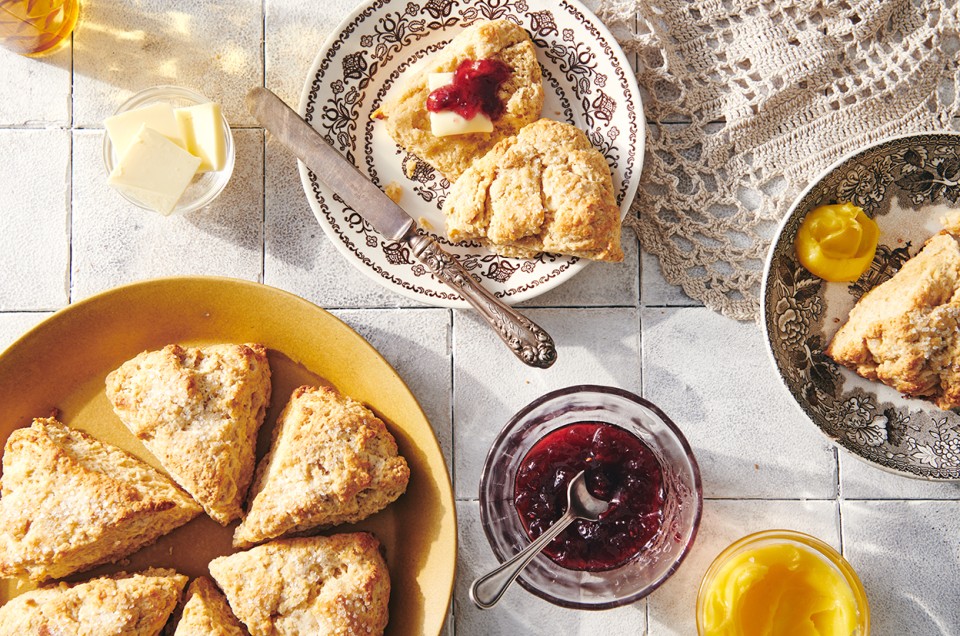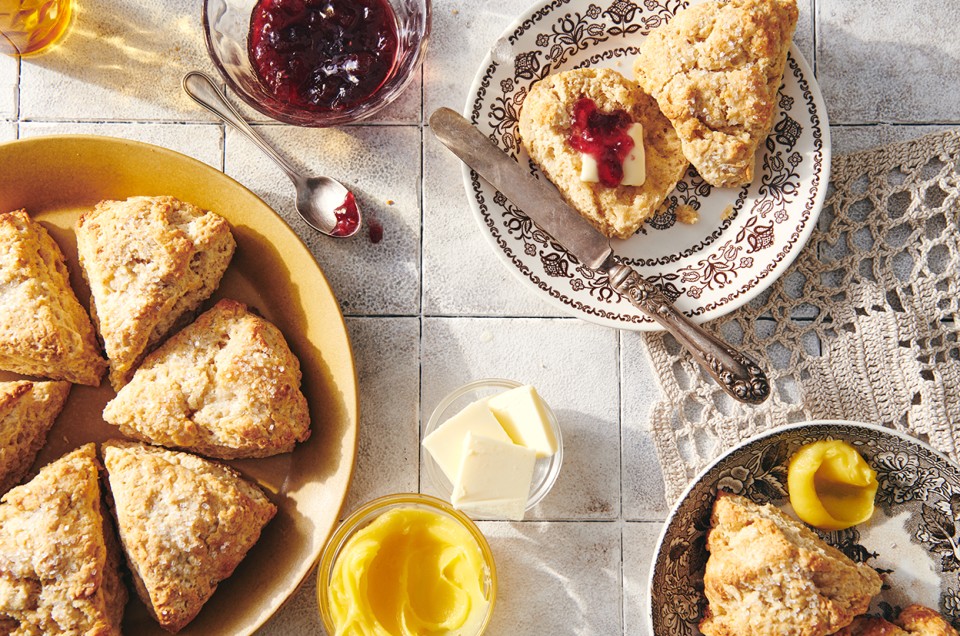Classic Scones
Here's a basic scone recipe just waiting for you to add your own personal touches. With a cup of whole wheat flour (which, trust us, you'll never notice), they add a touch of fiber to your breakfast, along with great flavor.



Here's a basic scone recipe just waiting for you to add your own personal touches. With a cup of whole wheat flour (which, trust us, you'll never notice), they add a touch of fiber to your breakfast, along with great flavor.




Preheat your oven to 500°F. Lightly grease a baking sheet, or line it with parchment.
In a large mixing bowl, blend the dry ingredients together thoroughly.
With a pastry blender, pastry fork, a mixer or, most easily, your fingertips, work in the butter until the mixture is unevenly crumbly. If you're adding any "extras" (see tips below), toss them in, stirring to distribute.
Take about 20 seconds to stir in the liquid. The dough will be rough and shaggy but that's the way it should look.
Turn it out onto a well-floured board. Flour your hands and the surface of the dough well. Knead it very gently about 10 times, just enough to bring it together. It is not supposed to be smooth and springy like bread dough. Sprinkle on more flour as you need it to keep the dough from sticking.
Cut the dough in half, and press or roll each piece gently with a well floured rolling pin into a circle about 6" x 1/2". You can tidy up the edges with the palms of your hands if you want, but do it gently. Half the charm of scones is their "shagginess."
Cut each circle into 6 wedge-shaped pieces with the edge of a bench or bowl scraper (or spatula), pressing down firmly without sawing. You'll find it easier if you dip your cutter in flour after each cut. Make sure you press it into the dough quickly, without twisting or sawing. This shears the dough cleanly rather than pressing it together, which allows the scones to rise higher.
Transfer each piece gently to the prepared baking sheet, leaving a half inch or so between them. Put them in the oven, reduce the temperature to 450°F, and bake for about 13 to 15 minutes, until they're a light golden brown.
Remove the scones from the oven, and serve hot, warm, or at room temperature. Wrap any leftovers airtight, and store several days at room temperature; freeze for longer storage.
The maximum temperature rating for most parchment paper is below 500°F, and at temperatures between 450°F and 500°F parchment’s exposed edges begin to char. To be safe, keep a close eye on anything being cooked at temperatures above 450°F (especially anything on an upper rack). Burned edges can also be minimized by trimming away excess parchment before baking.

Popular in recipes
Popular in products

